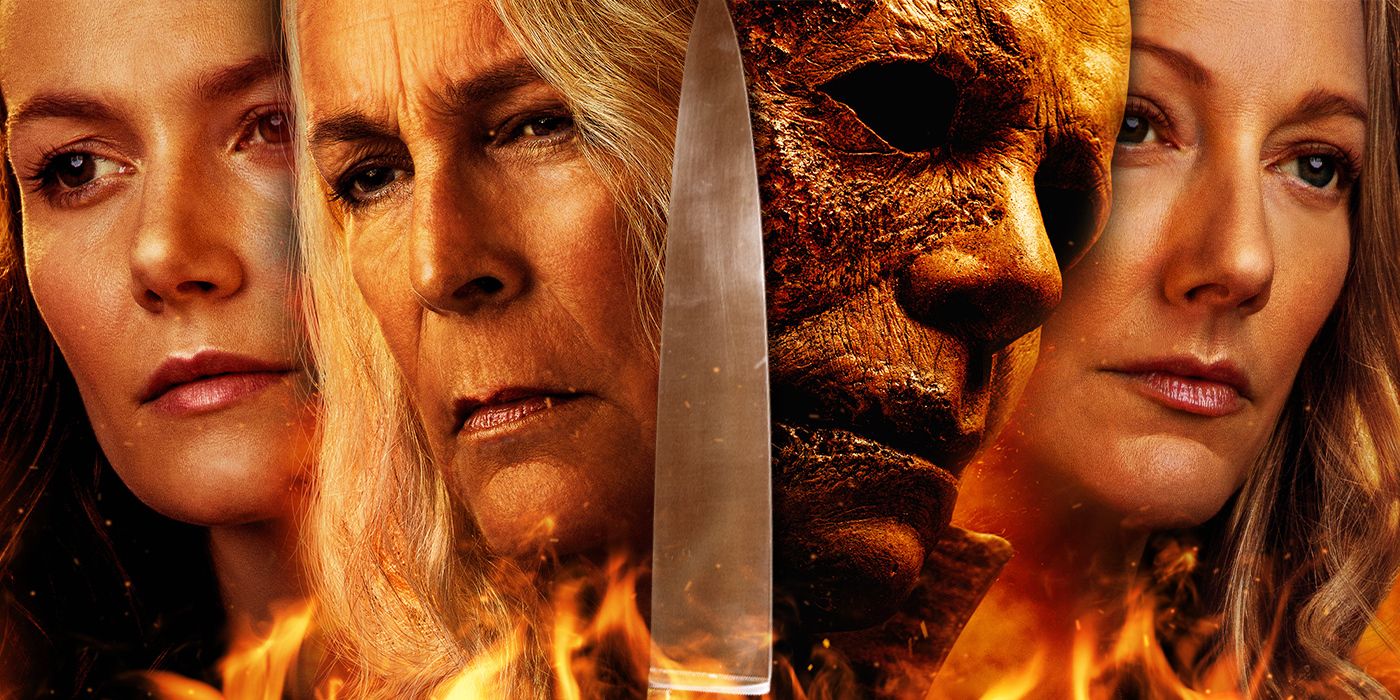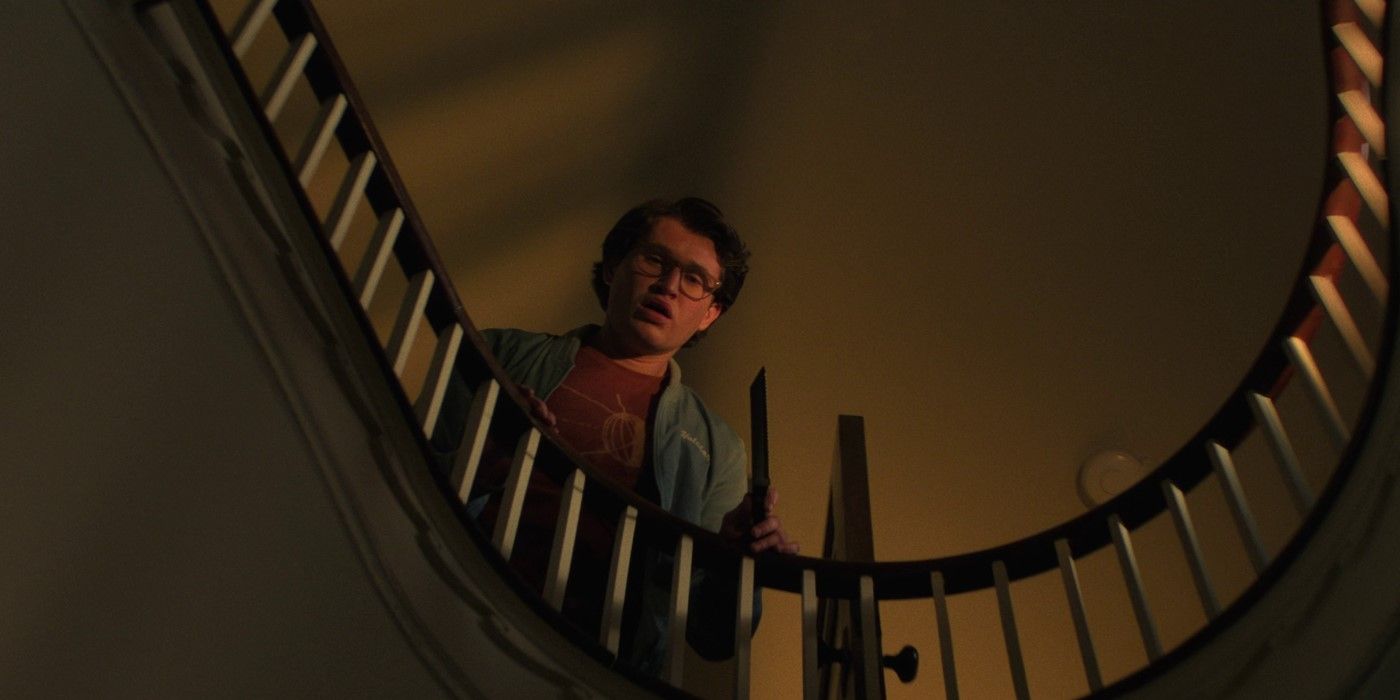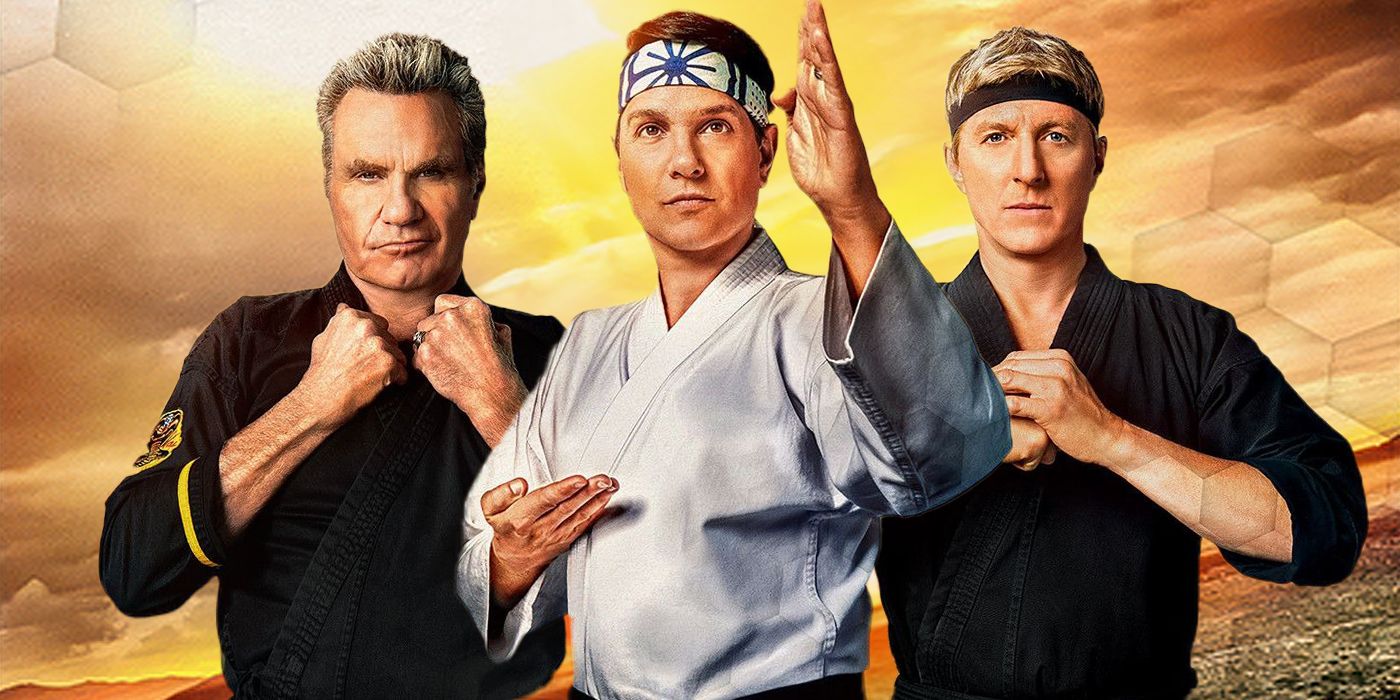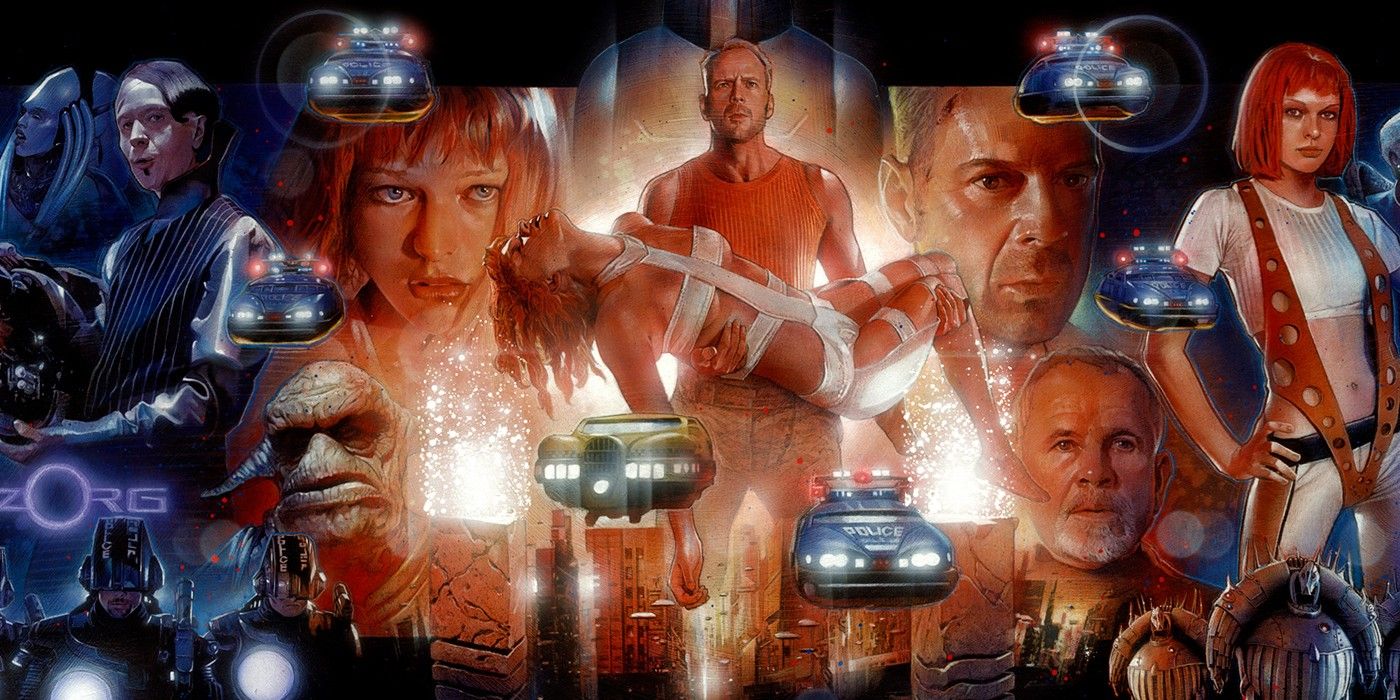The Big Picture
- David Gordon Green’s Halloween trilogy successfully revived the terrifying presence of Michael Myers through the accurate portrayal of his rage and the use of practical effects. The mask, created by makeup artist Christopher Nelson, captured the iconic ’78 mask while showing its age.
- The violence and gore in the films, although intense, added to the terrifying realism of Michael Myers’ killings. The practical effects team, led by Christopher Nelson, created scenes that were chillingly realistic, leading to some unforgettable moments.
- Halloween Kills upped the body count and introduced shocking scenes that pushed the boundaries of the franchise. The film featured a high number of deaths, with creative and brutal kills. The opening scene and the final scene of Halloween Ends were particularly shocking and showcased the franchise’s willingness to take risks.
Michael Myers and the Halloween franchise laid dormant for almost a decade, before being resurrected by David Gordon Green in 2018. His first film in a new trilogy, simply titled Halloween, was a return to form, with Michael Myers (James Jude Courtney) looking scary again, and Jamie Lee Curtis back as Laurie Strode. The two follow-ups, 2021’s Halloween Kills, and 2022’s Halloween Ends, have their fans and critics. You either love the risks they took, or you’re disappointed by the uber violence and the confusing move taken in the final chapter.
No matter what you may have thought of the trilogy from a creative standpoint, David Gordon Green positively left his mark. After so many Halloween movies got the mask wrong, he got it right, making the Boogeyman someone to be feared rather than ridiculed. Though his films are indeed violent and very gory, those kill scenes look frighteningly realistic. You might love or hate his version of the Shape, but you will not forget him. A new book put out by Titan Books called Halloween: The Official Making of Halloween, Halloween Kills and Halloween Ends by Abbie Bernstein dives deep into the making of Green’s trilogy. One of its most fascinating delves is into the practical effects used, and how the realism of Michael Myers’ rage looked so shockingly real.
Halloween (2018)
Laurie Strode confronts her long-time foe, Michael Myers, the masked figure who has haunted her since she narrowly escaped his killing spree on Halloween night four decades ago.
‘Halloween’s Effects Had to Accurately Portray Michael Myers’ Rage
The Michael Myers in the 2018 Halloween is an angry one. This Michael has been locked up for forty years, and when he’s let out by Dr. Sartain (Haluk Bilginer), he’s a pent-up dog on the loose. To show the extent of the Shape’s rage, David Gordon Green was going to need a team that could make the effects look legit. Audiences had to see what Michael could do and have it be believable, or else risk turning the Boogeyman into a joke all over again.
The easiest way to not make Michael a joke was the mask. So many sequels missed the mark. This Halloween got it right thanks to the efforts of makeup artist Christopher Nelson, a man so talented that he even won an Oscar for Best Makeup and Hairstyling due to his work on Suicide Squad. Nelson explains in Bernstein’s book that he created the new Myers mask by having “a reference of the William Shatner mask right next to us. The mask was sculpted over James Jude Courtney’s life cast.” As for making the mask look forty years older, he says that most of that was accomplished in the sculpt itself, but the paint was used to make it look dirty and worn. It turned out as a perfect resemblance to the iconic ’78 mask. Right away, just by looking at him, Michael Myers was scary again. Now Christopher Nelson had to scare audiences by showing us what Michael could do.
We get several scenes throughout the 2018 Halloween showing the strength of Michael’s mayhem. The prison bus escape scene has a man with his neck broken and twisted far back. To do this, Nelson’s team made a full silicone dummy, with a look of terror on his face he called a “death shriek.” We don’t see this man die, but just a glimpse of him is enough to send chills down our spine. Another notable kill we see after the fact is just as impressive for a different reason. During the gas station scene, we discover an attendant dead in his office with his jaw ripped open. It’s a gruesome scene, but this isn’t a silicone dummy. It’s an actor wearing a full prosthetic. David Gordon Green said in Berstein’s book, “It looks truly terrifying and real, and I could get two inches away [with the camera].”
There are many graphic shots of the Shape’s chaos being found, but also some brutal on-screen deaths as well. The worst is Dr. Sartain’s, when Michael stomps on his doctor’s head, squashing it like a pumpkin. Nelson explained the effect, saying of the fake head, “That’s filled with fake blood and a lot of tofu.” Yep, that’s right, tofu. Michaels’ meatiest kill is actually a vegan dream.
‘Halloween Kills’ Upped the Body Count and Reintroduced Us to Dr. Loomis
Halloween Kills wasn’t as critically acclaimed as its predecessor. Still, it’s a fun slasher flick thanks to the immense body count. If you thought Michael was mad before, try locking him in a basement and setting it on fire. The first time we see Michael in Halloween Kills, he’s walking out of Laurie’s flaming house, where he quickly dispatches of a whole fire department. It’s an over-the-top scene, with Michael killing firefighters with chainsaws to the head and impaling them with their tools. So many people died in Halloween Kills that Nelson said they were using old prosthetics “because of the amount of stuff we needed.” That wasn’t the only issue to overcome with the high body count. Nelson said the hardest part “was the amount of blood gags working effects makeup. There was just so much more than in Halloween.”
Halloween Kills is thick with blood and guts. One character jumps off a roof, only for his brains to pop out of his skull. Another character gets Michael’s thumbs jammed deep into his eye sockets. The most gut-wrenching moment is when Michael stabs Sondra (Diva Tyler) in the throat with a broken light tube. There is no quick cut when this moment happens; we see every awful second of it without the camera looking away. To make this look real, Nelson revealed in the Halloween making-of book that a prosthetic neck and blood rig was used, with “a retractable fluorescent lightbulb that gets shoved in her neck when she’s wearing the prosthetic.”
The most impressive practical effect in Halloween Kills has nothing to do with blood and gore. It’s when Dr. Loomis walks into the scene during the 1978 flashback. The actor who played Loomis in the original Halloween, Donald Pleasence, passed away in 1995, but the man we see in Halloween Kills looks eerily like him. How did they pull off something so stunning? The new Halloween movies were blessed to have their head of carpentry, Tom Jones Jr., already looking a lot like Pleasance. To take the effect to the next level, they used a silicone prosthetic that Nelson said consisted of pieces for his chin, nose, eyes, brows, temple, crown, and ears, along with a wig. The result was a moment that made fans of the original Halloween feel as if Donald Pleasence was walking out of another world. It took a scene that could have been awkward and made it especially sweet.
‘Halloween Ends’ Gave Us Two of the Franchise’s Most Shocking Moments
2022’s Halloween Ends gave us fewer kills and a lot less Michael. In his place, a copycat named Corey Cunningham (Rohan Campbell) does most of his dirty work. Some of the kills are still gruesome, but the two most shocking scenes, the ones that open and close the movie, gave fans something we’d never seen in the franchise before.
The first scene of Halloween Ends will make you gasp out loud. In it, Corey is babysitting a foul-mouthed little kid named Jeremy (Jaxon Goldenberg) who plays a mean trick on Corey, locking him in an upstairs room. Panicking, Corey shoves the door open hard, knocking into Jeremy and sending him falling over a staircase, where he hits the ground below, his body snapping in half right in front of his parents. To make Jeremy’s death as brutal as you can imagine, Nelson said his team “did a full-size replica of [Goldenberg]” using 3D scans and 3D printers for a body made of urethane foam. Since Jeremy needed to be able to move, he had “an internal skeleton armature, made out of PVC plastic and aluminum bungee cords.” There were also weighted sandbags inside the body. All that was left to do after that was chuck it off the landing and let gravity do the rest of the work.
Then there is the death of Michael Myers. Michael “dies” in every Halloween movie he’s in, but he always comes back. For Halloween Ends, David Gordon Green needed to come up with a way to kill the Boogeyman which was so final that there was no plausible way to write him into another sequel. The decision was made to put Michael’s body (after Laurie kills him) into a junkyard grinder, turning him into hamburger meat. For that image of Michael unmasked being chopped up into nothing, Nelson’s team made a dummy filled with blood bags. “We tinted the foam inside the dummy red and marbled it, so it looks like meat.” It made for a jaw-dropping sight as the most famous slasher is ripped apart in a scene that is shocking rather than silly.
Michael Myers will return in some form eventually, in TV show and film reboots. When he does, a new team will have to figure out how to make him scary again. None will be able to top visually what Christopher Nelson did. Say what you want about David Gordon Green’s Halloween trilogy, but it was one hell of a beautifully disgusting mess. The behind-the-scenes interviews in Abbie Berstein’s Halloween: The Official Making of Halloween, Halloween Kills, and Halloween Ends do a stellar job of recreating that.
David Gordon Green’s Halloween Trilogy is available to rent on Prime Video in the U.S.
Watch on Amazon





